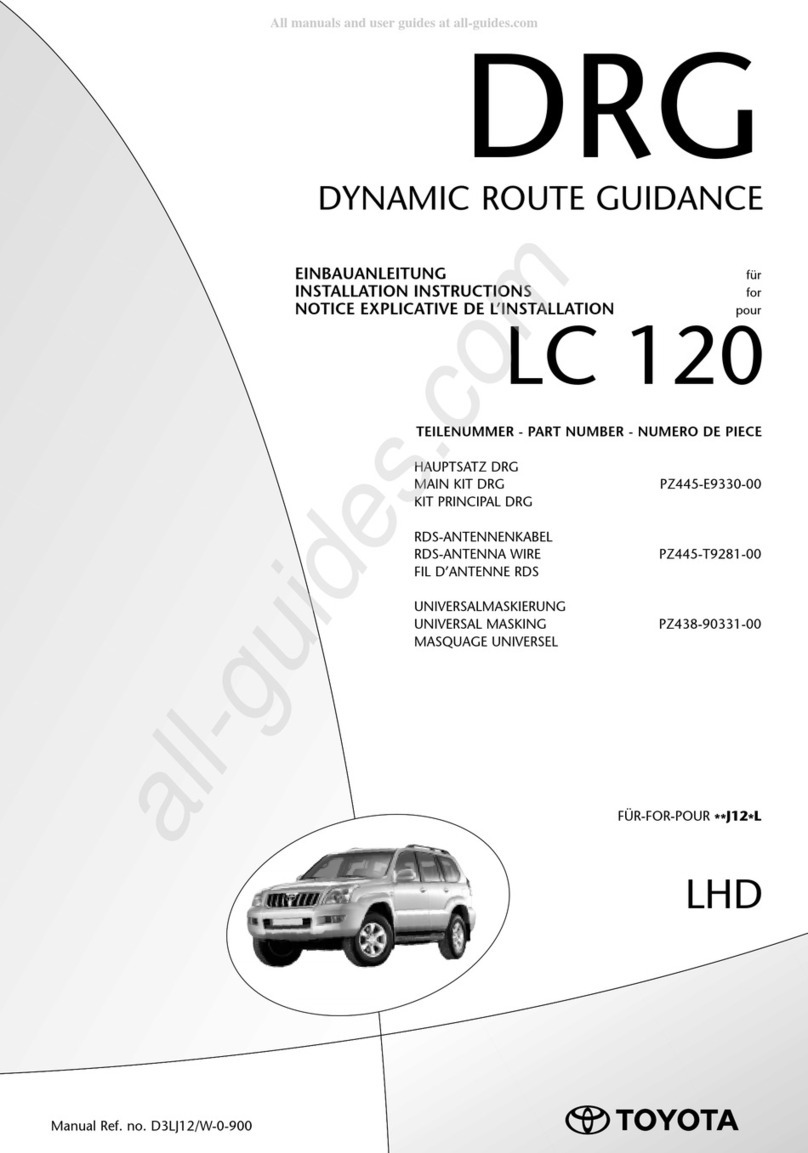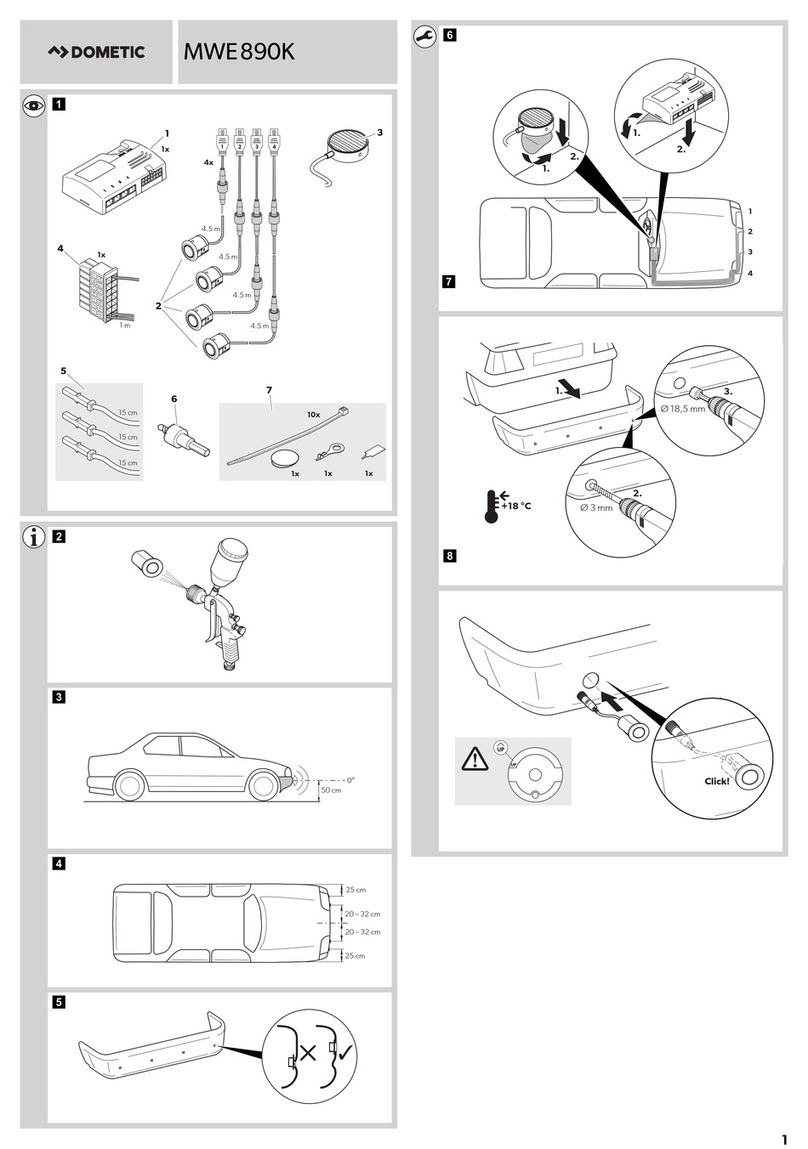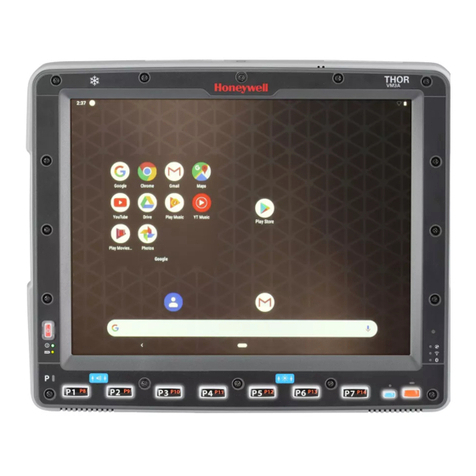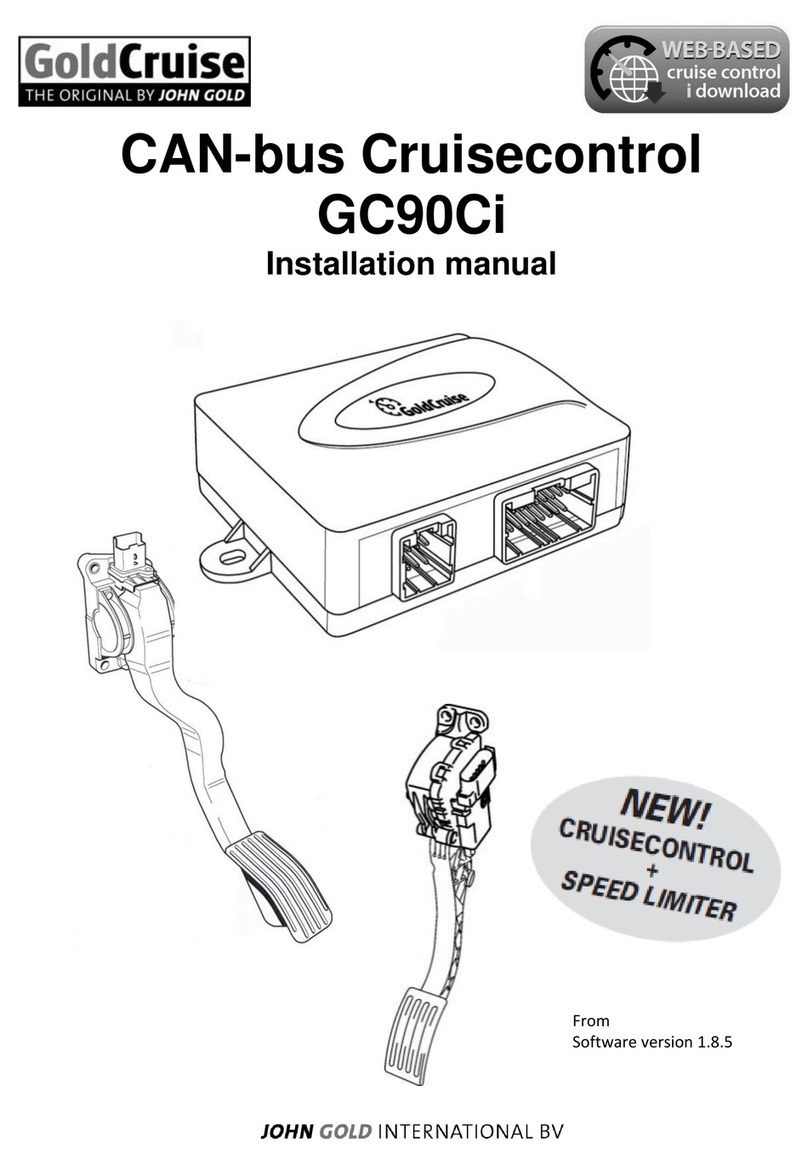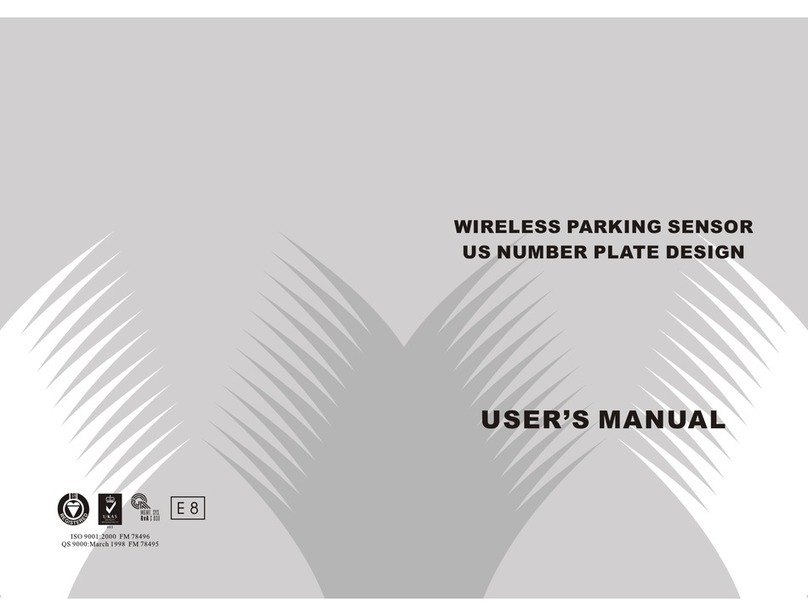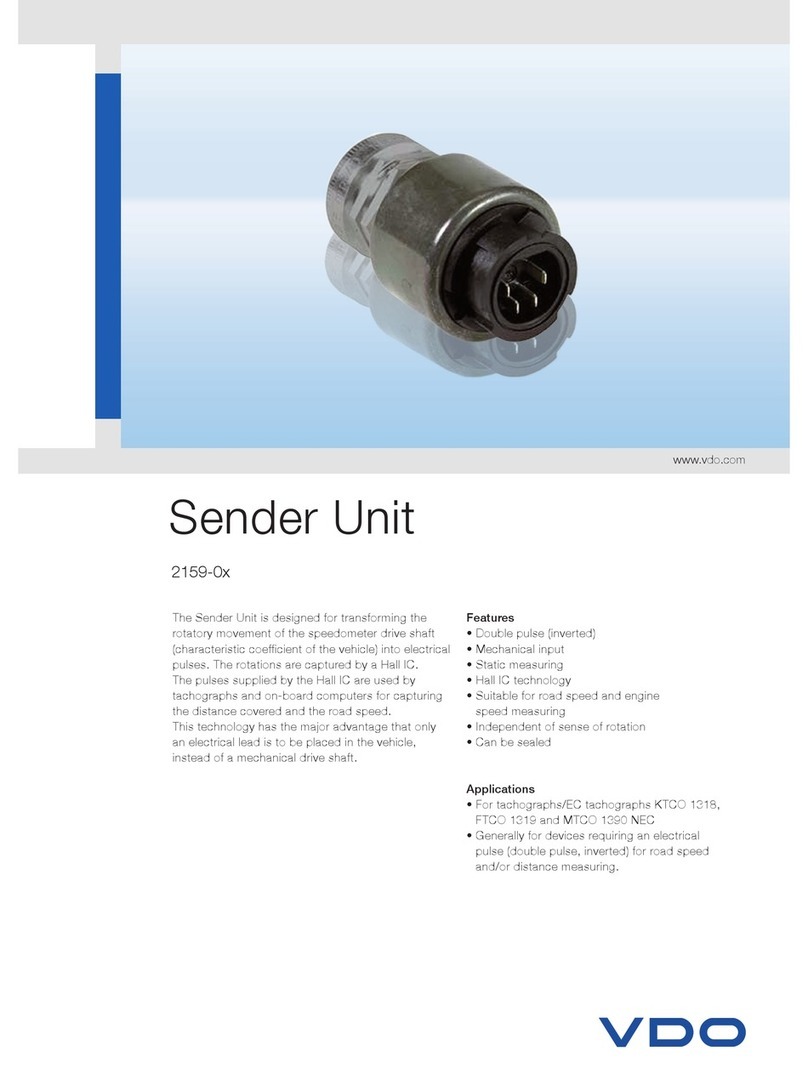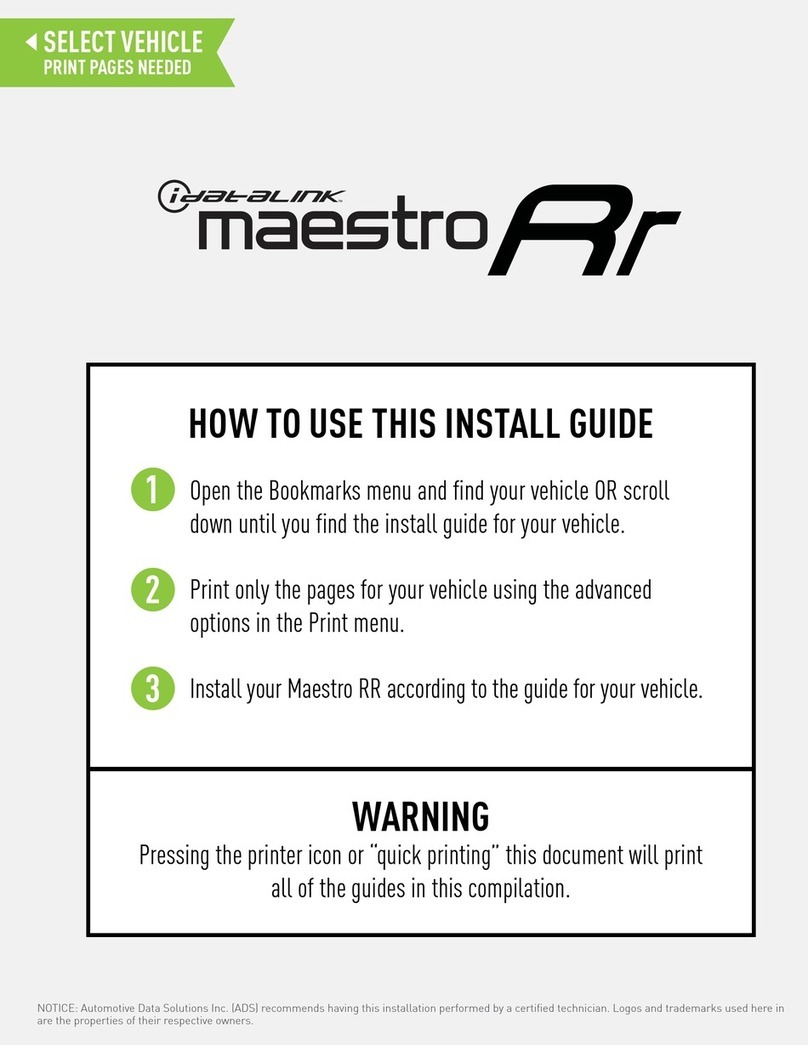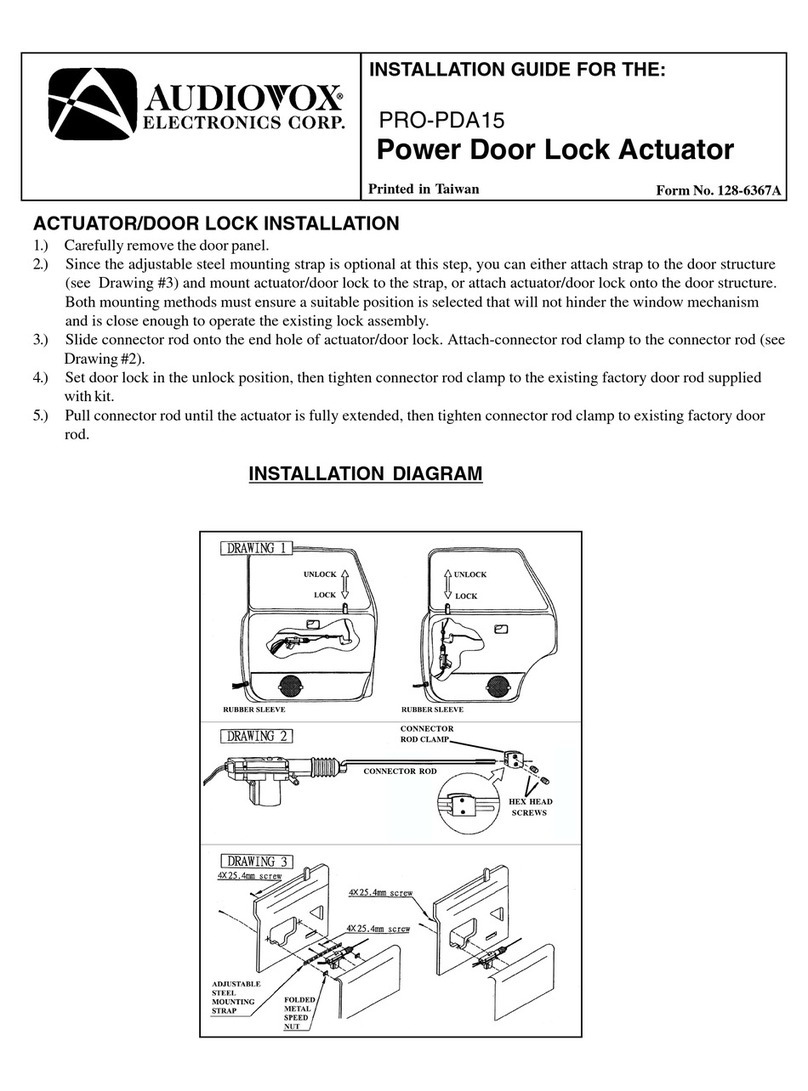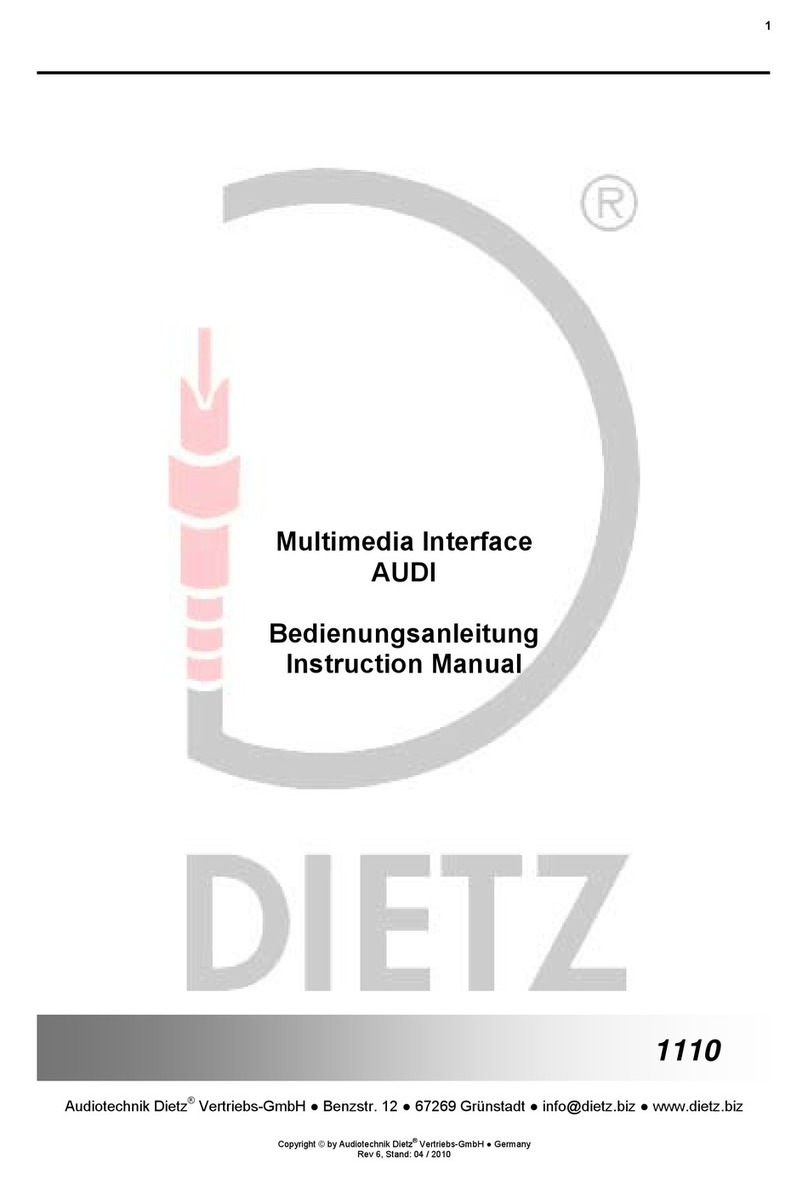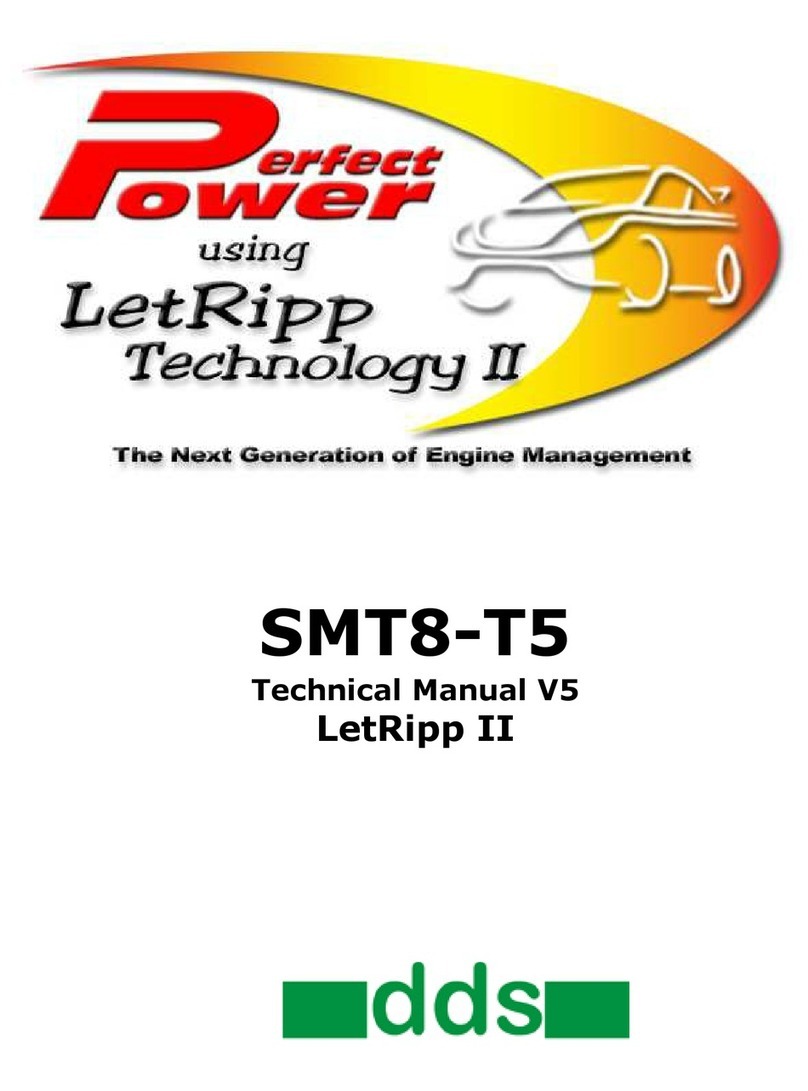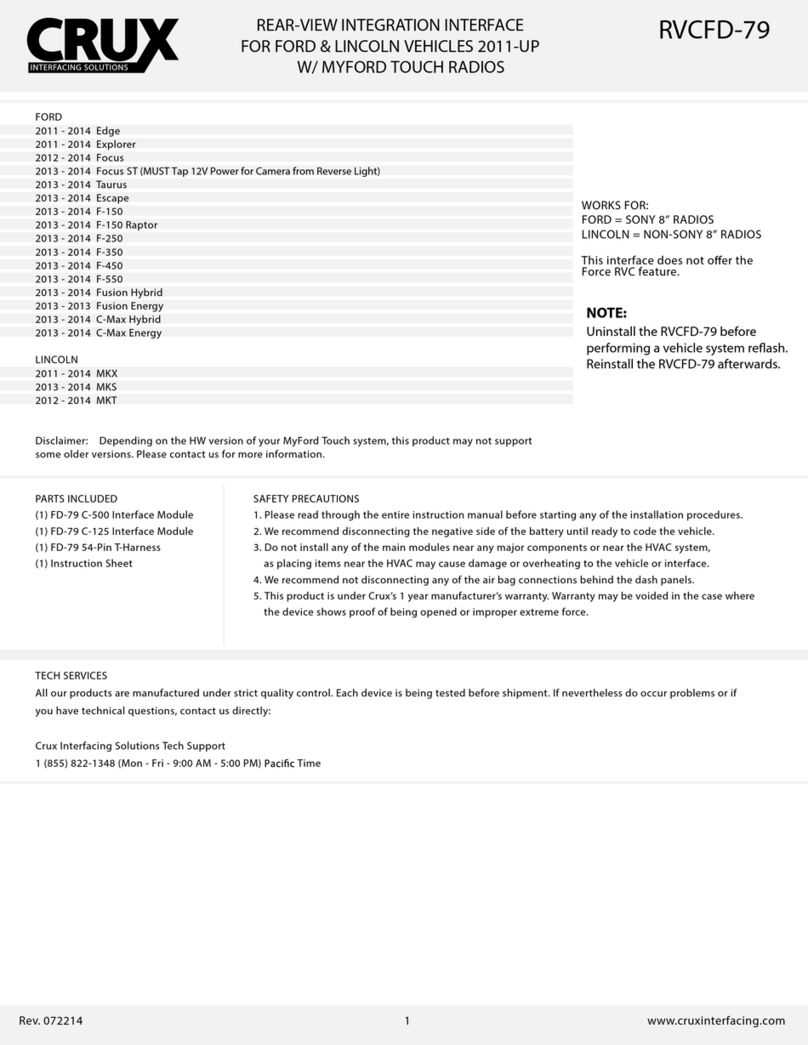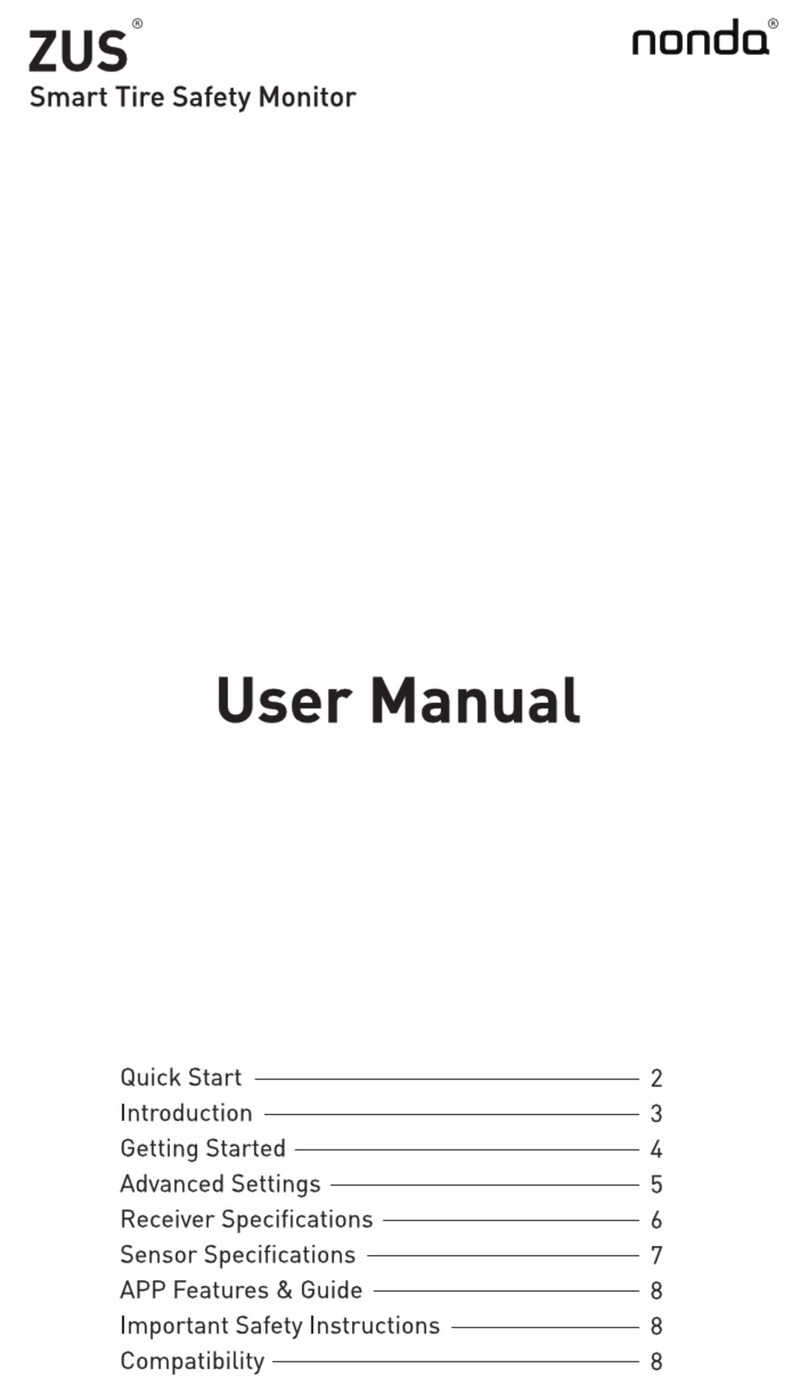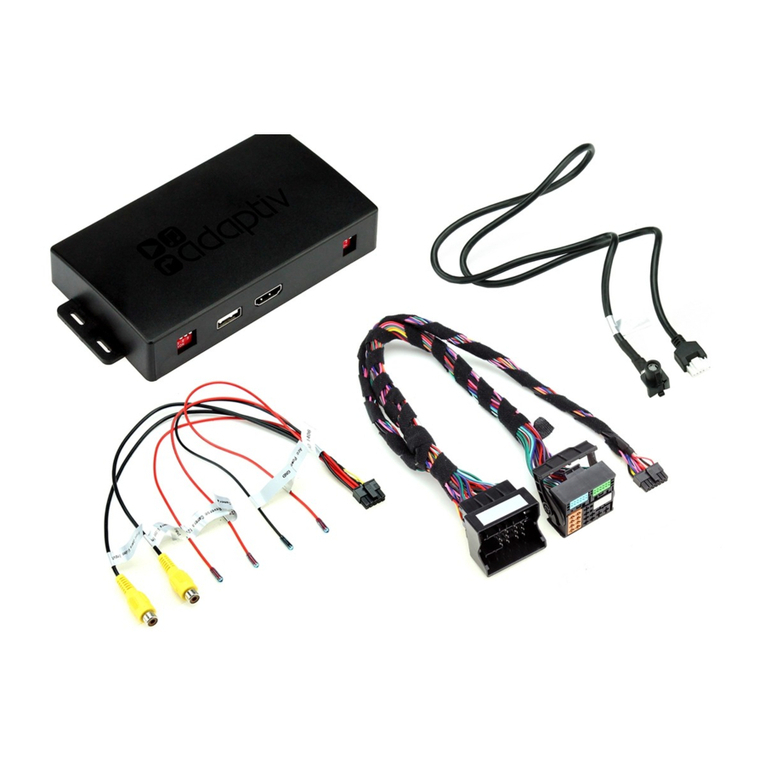
Page 1 of 15
WARNING!
Failure to install or use this product according to manufacturer’s recommendations may result in property
damage, serious bodily/personal injury, and/or death to you and those you are seeking to protect!
IMPORTANT! Read all instructions before installing and using. Installer: This manual must be
delivered to the end user.
Installation and Operation Instructions
Smartspot™ Collision Avoidance System
CAUTION!
When drilling into any vehicle surface, make sure that the area is free from any electrical wires, fuel lines,
vehicle upholstery, etc. that could be damaged.
Storage:
1. Do not expose the device to excessive hot or cold temperatures. The storage temperature of this device is -30 to +80°C and the operating
temperature is -20 to +70°C The humidity is RH90% .
2. Never use this device in environments with excessive moisture dust or smoke.
3. Avoid dropping or striking this device.
4. Never puncture, scratch or use abrasive cleaning material on this device.
5. Do not place cables where they may be pinched or stepped on.
Content:
1. Operating Precautions Page 2
2. Product Features Page 2
3. Technical Specications Page 2
4. Accessories & Replacement Parts Page 3
5. Part Identication Page 3
6. Installation Page 4
7. Object Detection Capability Page 7
8. PC Conguration Tool Page 8
9. Testing and Maintenance Page 15
10. Troubleshooting Page 15
Do not install and/or operate this safety product unless you have read and understand the safety
information contained in this manual.
1. Proper installation combined with operator training in the use, care, and maintenance of emergency safety devices are essential to ensure the safety of
you and those you are seeking to protect.
2. Exercise caution when working with live electrical connections.
3. This product must be properly grounded. Inadequate grounding and/or shorting of electrical connections can cause high current arcing,which can cause
personal injury and/or severe vehicle damage, including re.
4. Proper placement and installation are vital to the performance of this safety device. Install this product so that output performance of the system is
maximized and the controls are placed within convenient reach of the operator so that s/he can operate the system without losing eye contact with the
roadway.
5. Do not install this product or route any wires in the deployment area of an air bag. Equipment mounted or located in an air bag deployment area may
reduce the eectiveness of the air bag or become a projectile that could cause serious personal injury or death. Refer to the vehicle owner’s manual for
the air bag deployment area. It is the responsi-bility of the user/operator to determine a suitable mounting location ensuring the safety of all passengers
inside the vehicle particularly avoiding areas of potential head impact.
6. It is the responsibility of the vehicle operator to ensure during use that all features of this product work correctly. In use, the vehicle
operator should ensure the projection of the safety signal is not blocked by vehicle components (i.e., open trunks or compartment doors), people,
vehicles or other obstructions.
7. The use of this or any other safety device does not ensure all drivers can or will observe or react to a warning signal. Never take the right-of way for
granted. It is your responsibility to be sure you can proceed safely before entering an intersection, driving against trac, responding at a high rate of
speed, or walking on or around trac lanes.
8. This equipment is intended for use by authorized personnel only. The user is responsible for understanding and obeying all laws regarding warning
signal devices. Therefore, the user should check all applicable city, state, and federal laws and regulations. The manufacturer assumes no liability for
any loss resulting from the use of this safety device.
